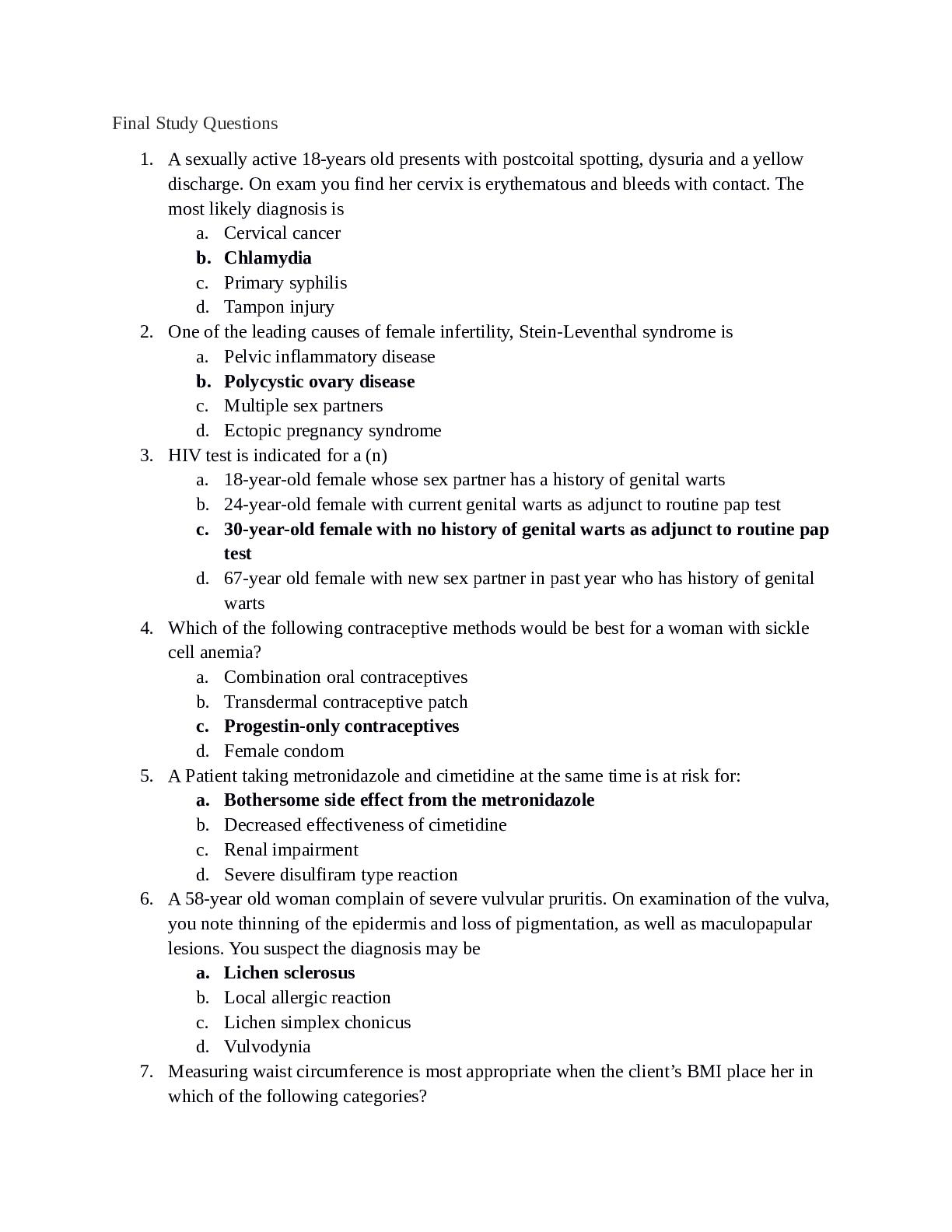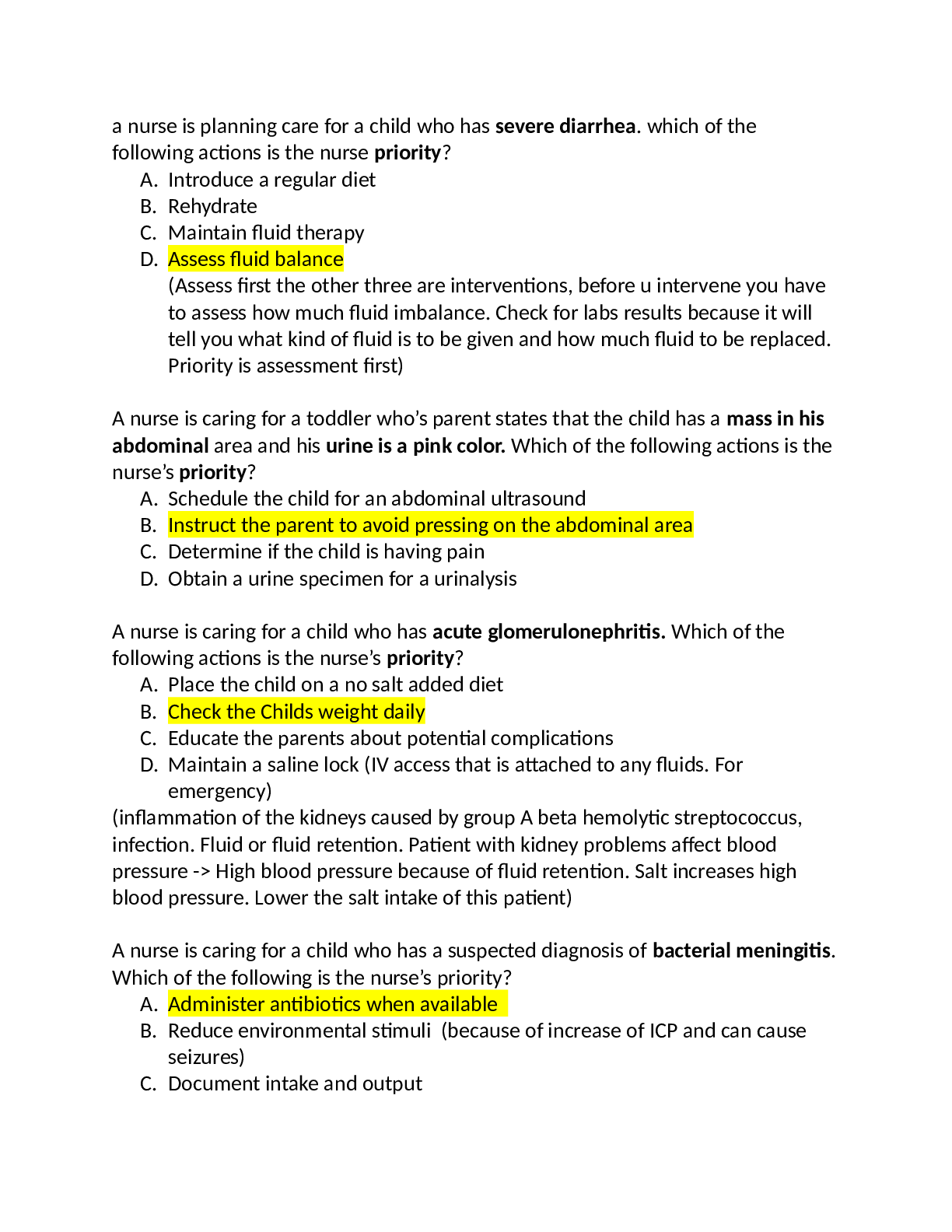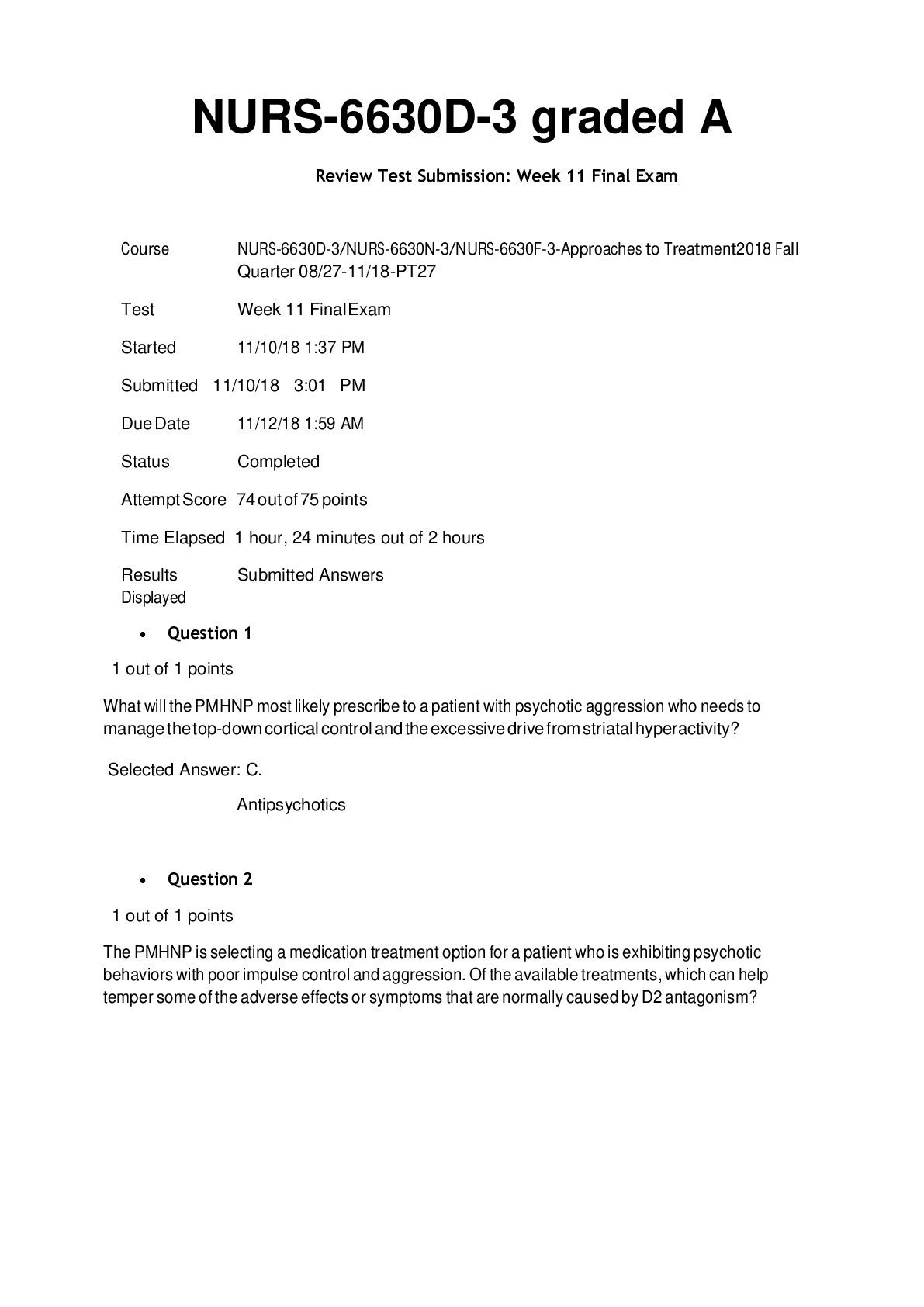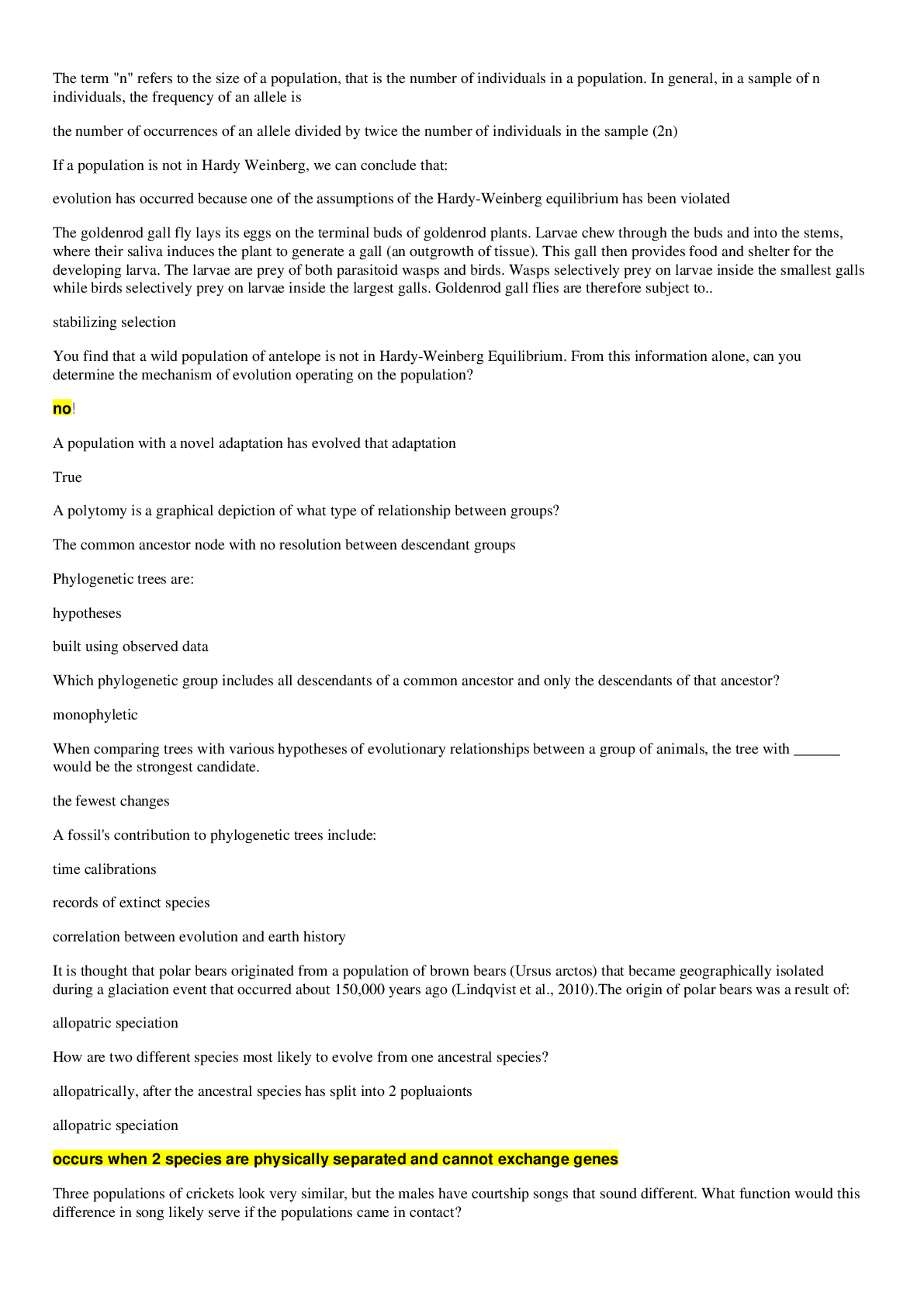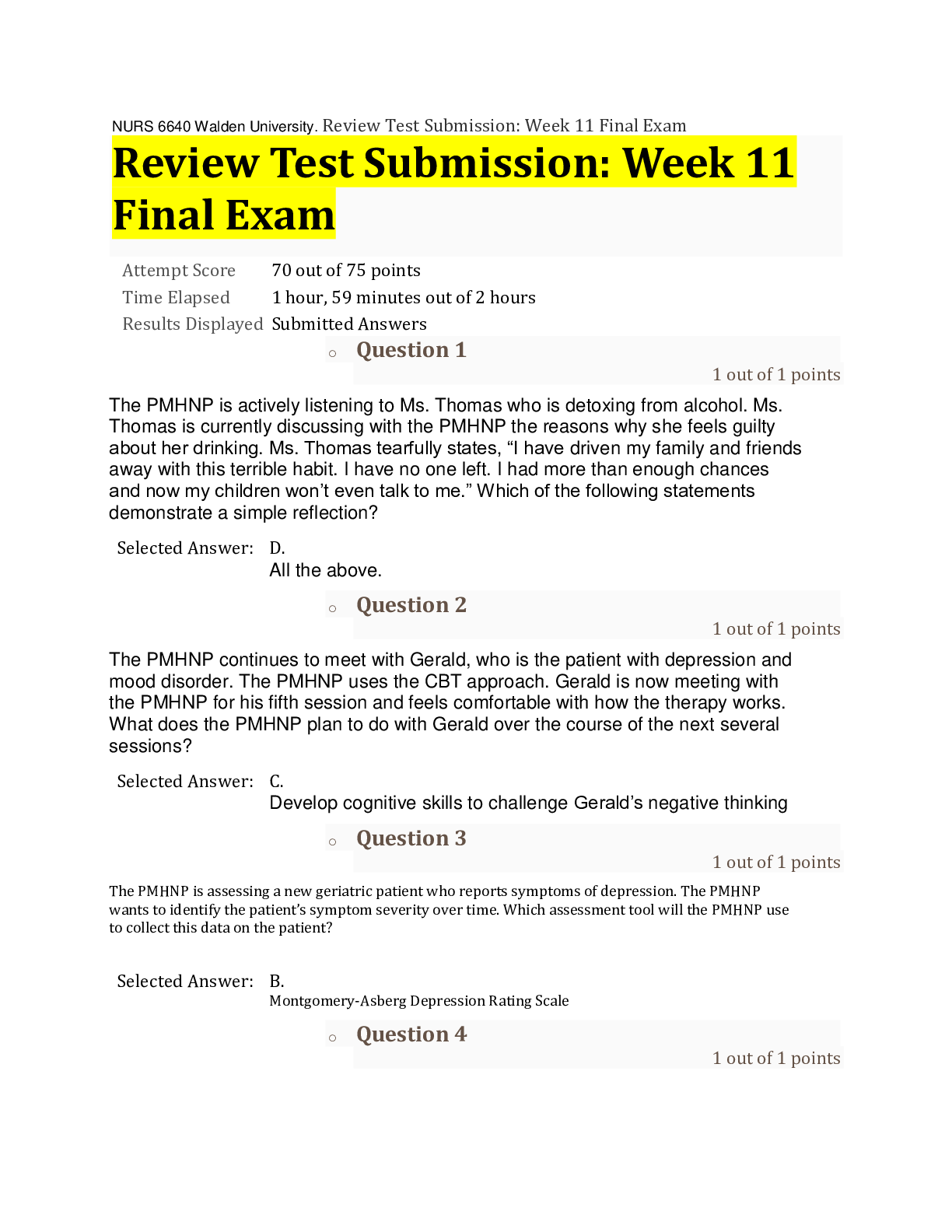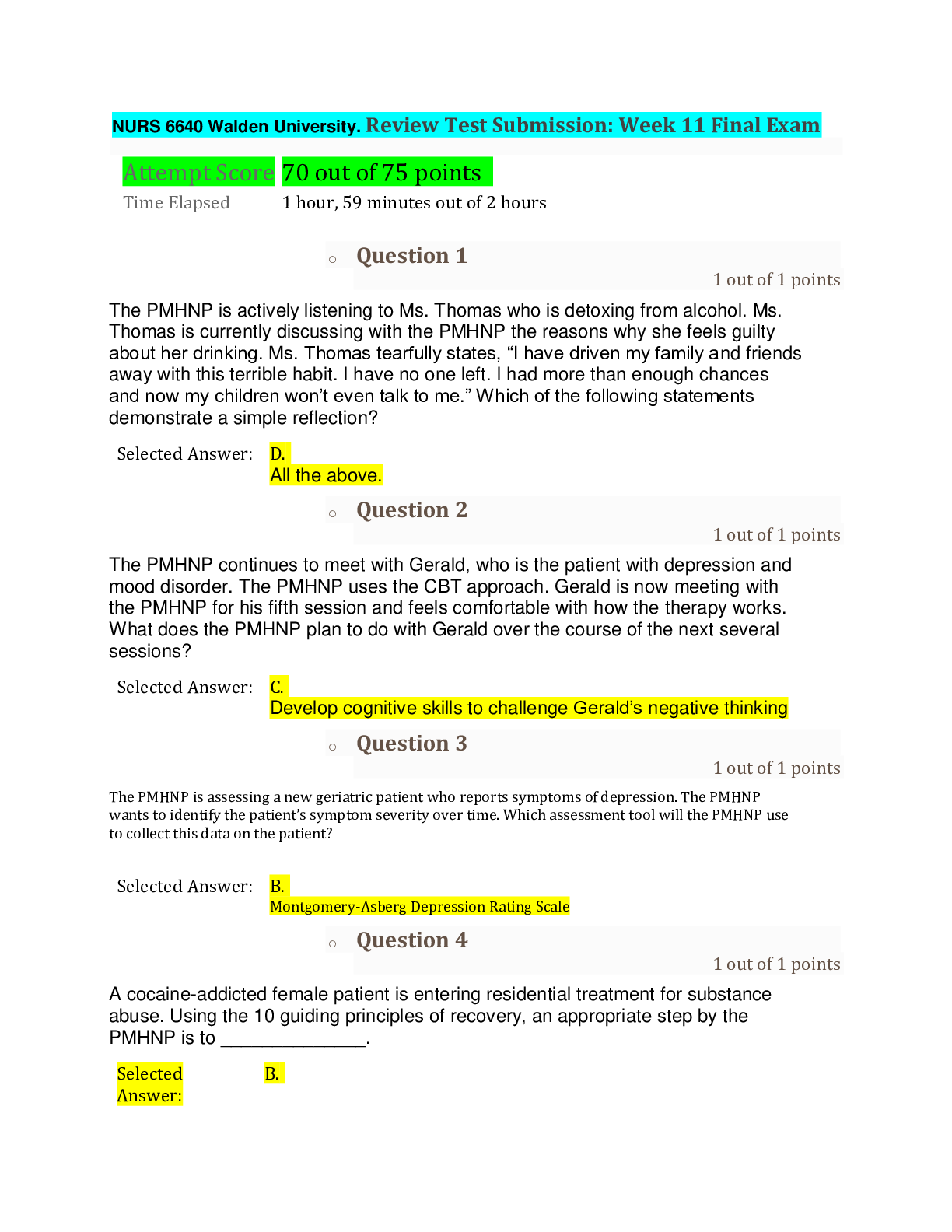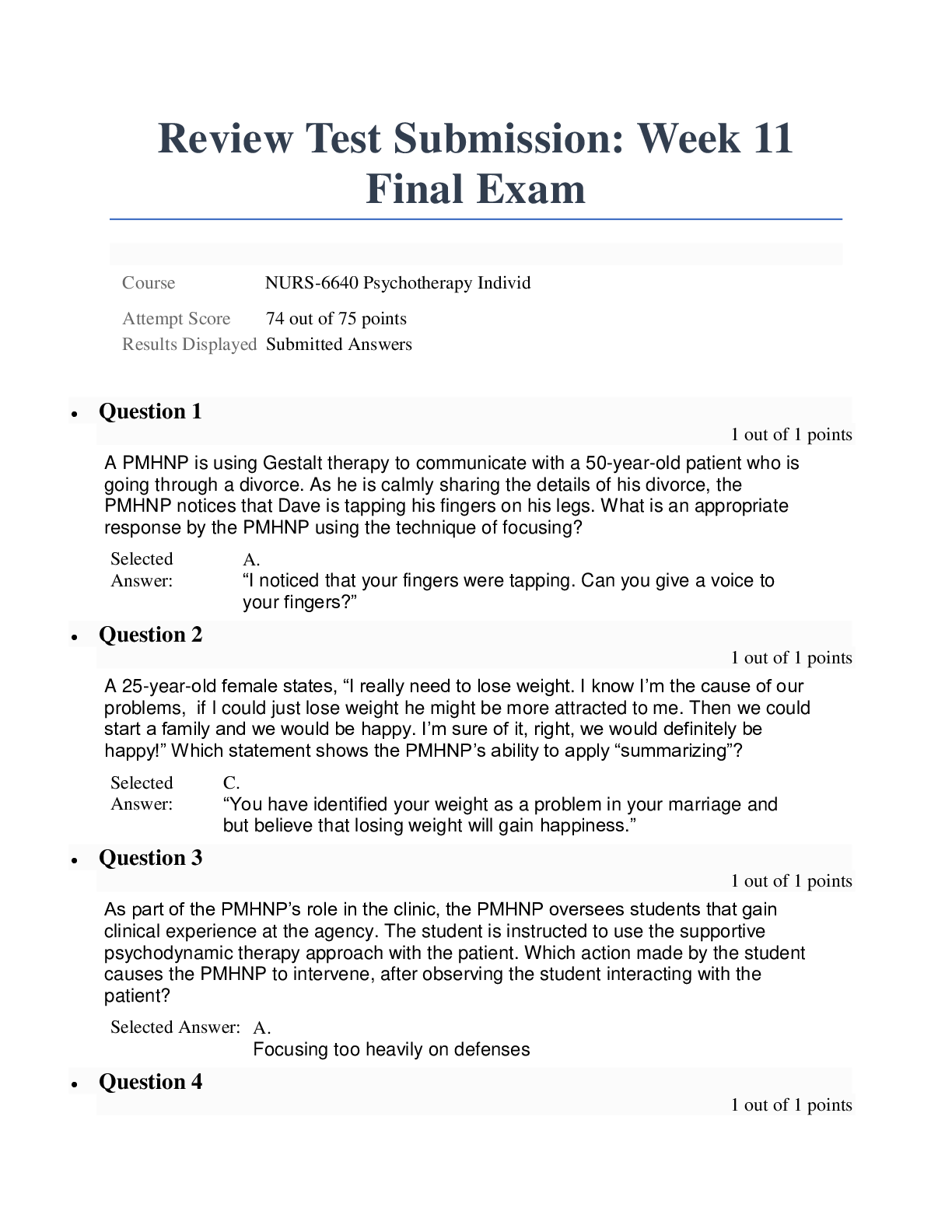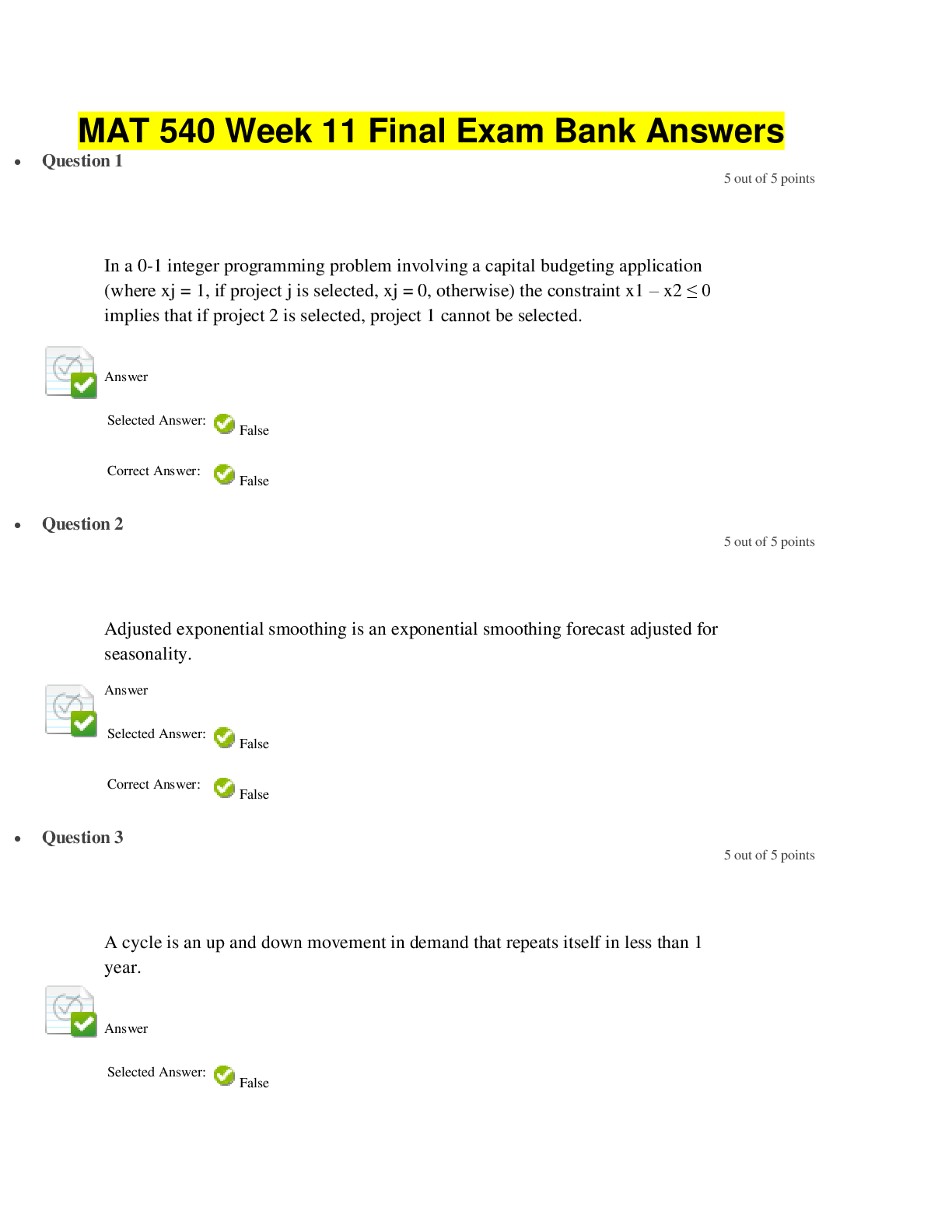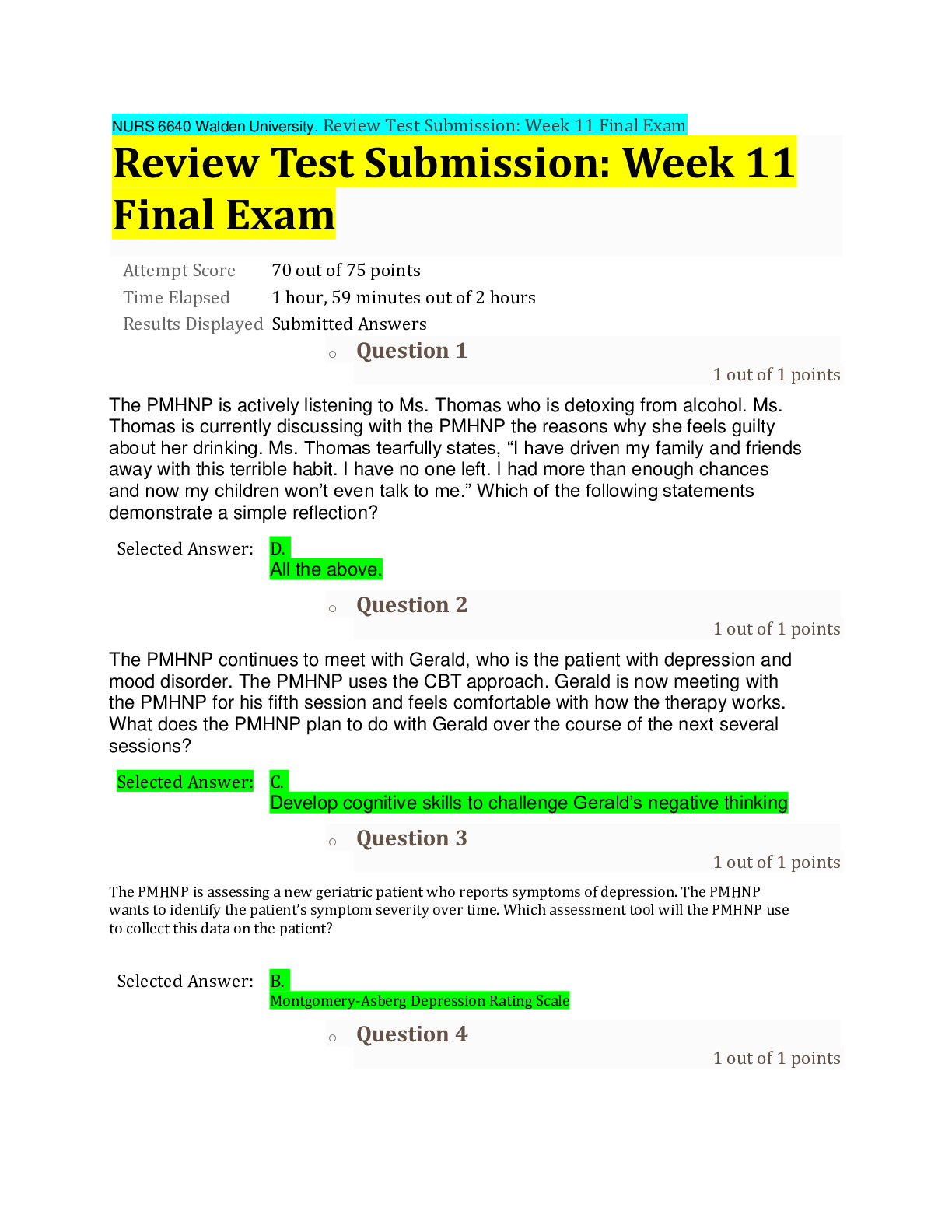*NURSING > EXAM > NURS6630 / NURS6630N Approaches to Treatment 2020 Week 11 Final Exam GRADED A (All)
NURS6630 / NURS6630N Approaches to Treatment 2020 Week 11 Final Exam GRADED A
Document Content and Description Below
NURS-6630N-,Approaches to Treatment.2020 Week 11 Final Exam • Question 1 0 out of 0 points When completing this exam, did you comply with University’s Code of Conduct including the e... xpectations for academic integrity? Selected Answer: Yes • Question 2 1 out of 1 points All drugs that lead to addiction increase __________________in the ventral striatum, which is also called the _______________. Selected Answer: a. Dopamine / nucleus accumbens • Question 3 1 out of 1 points A patient with chronic back pain has been prescribed a serotonin-norepinephrine reuptake inhibitor (SNRI). How does the PMHNP describe the action of SNRIs on the inhibition of pain to the patient? Selected Answer: a. “The SNRI can increase noradrenergic neurotransmission in the descending spinal pathway to the dorsal horn.” • Question 4 1 out of 1 points Karen completes the Epworth sleepiness scale and scores abnormally high. She is diagnosed with narcolepsy. The PMHNP prescribes a wake-promoting agent that is a weak dopamine transporter antagonist. Which medication did the PMHNP prescribe? Selected Answer: a. Modafanil (PROVIGIL) • Question 5 1 out of 1 points Which of these characteristics does NOT meet the criteria for probably Alzheimer's dementia? Selected Answer: b. Sudden onset • Question 6 1 out of 1 points Neal is complaining of restless leg syndrome and insomnia. Which first-line medication should the PMHNP prescribe to treat both? Selected Answer: a. Ripinirole (REQUIP) • Question 7 1 out of 1 points A nursing student asks the PMHNP about the difference between the use of stimulants in the treatment of ADHD and the abuse of stimulants in substance-use disorders. Which is the correct response? Selected Answer: a. All of these are correct. • Question 8 1 out of 1 points The PMHNP prescribes pregabalin (LYRICA) for a patient with chronic pain. How does pregabalin work to reduce pain? Selected Answer: b. It will block excitatory neurotransmission by blocking voltage-sensitive calcium channels. • Question 9 1 out of 1 points A patient addicted to heroin is receiving treatment for detoxification. He begins to experience tachycardia, tremors, and diaphoresis. What medication will the PMHNP prescribe for this patient? Selected Answer: d. Clonidine (Catapres) • Question 10 1 out of 1 points The PMHNP is caring for a patient who reports excessive arousal at nighttime. What could the PMHNP use for a time-limited duration to shift the patient’s brain from a hyperactive state to a sleep state? Selected Answer: a. Benzodiazepines • Question 11 1 out of 1 points The PMHNP is assessing a 49-year-old male with a history of depression, post-traumatic stress disorder (PTSD), alcoholism with malnutrition, diabetes mellitus type 2, and hypertension. His physical assessment is unremarkable with the exception of peripheral edema bilaterally to his lower extremities and a chief complaint of pain with numbness and tingling to each leg 5/10. The PMHNP starts this patient on a low dose of doxepin (Sinequan). What is the next action that must be taken by the PMHNP? Selected Answer: a. Order liver function tests. • Question 12 1 out of 1 points Antipsychotics are doses at a level that blocks ________% of D2 receptors. [Show More]
Last updated: 2 years ago
Preview 1 out of 18 pages
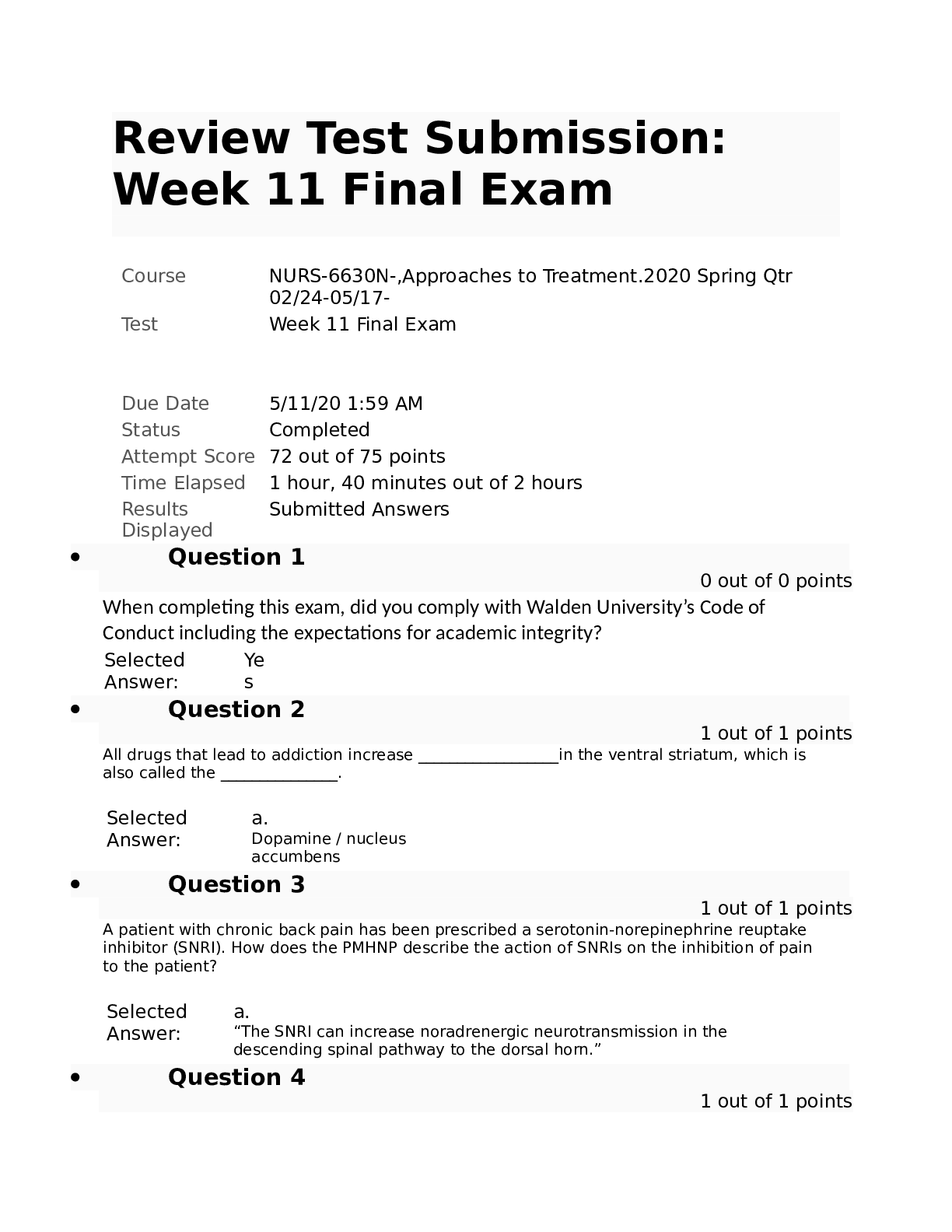
Buy this document to get the full access instantly
Instant Download Access after purchase
Buy NowInstant download
We Accept:

Reviews( 0 )
$13.00
Can't find what you want? Try our AI powered Search
Document information
Connected school, study & course
About the document
Uploaded On
Dec 07, 2020
Number of pages
18
Written in
Additional information
This document has been written for:
Uploaded
Dec 07, 2020
Downloads
0
Views
92







